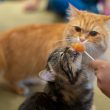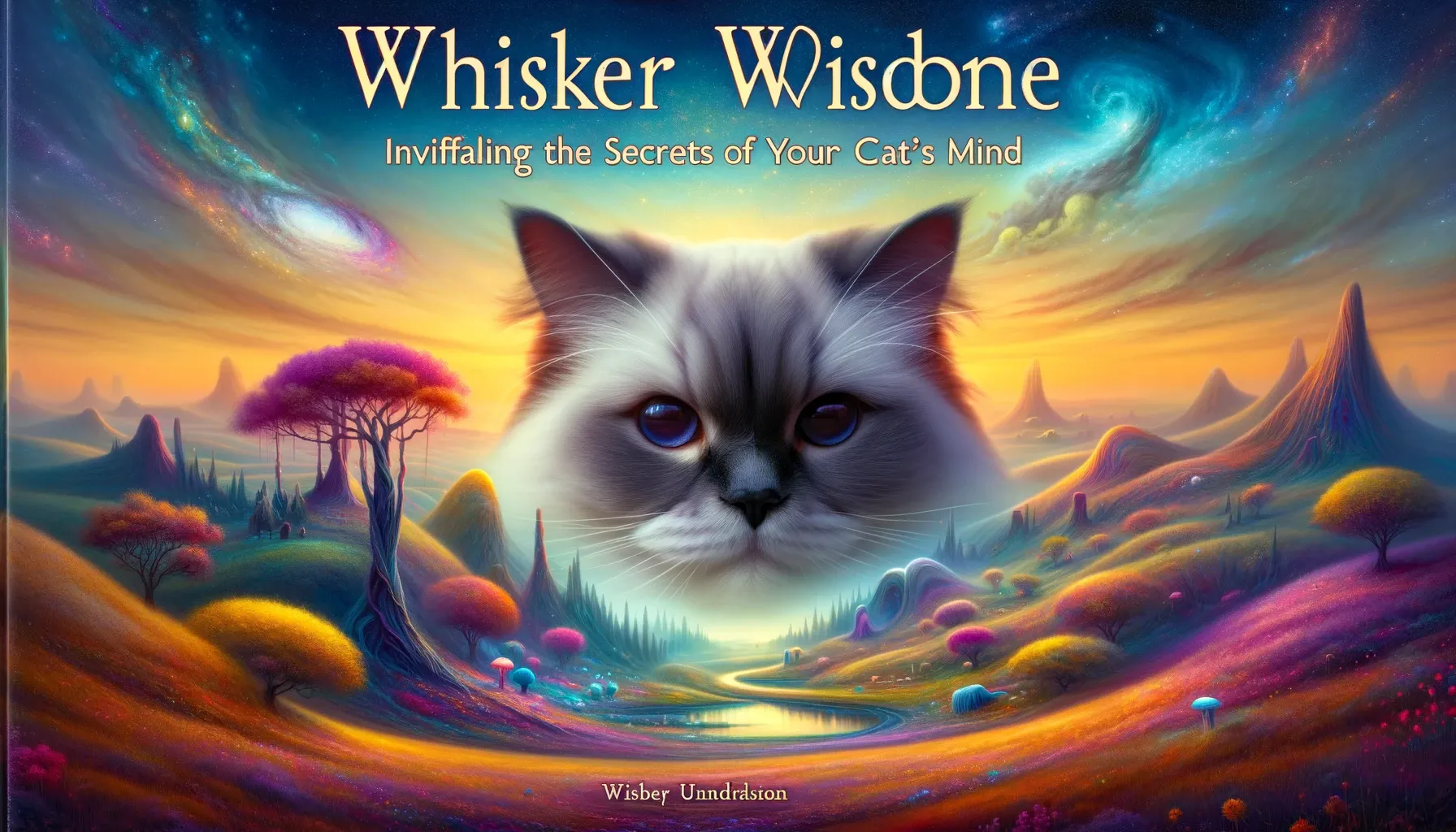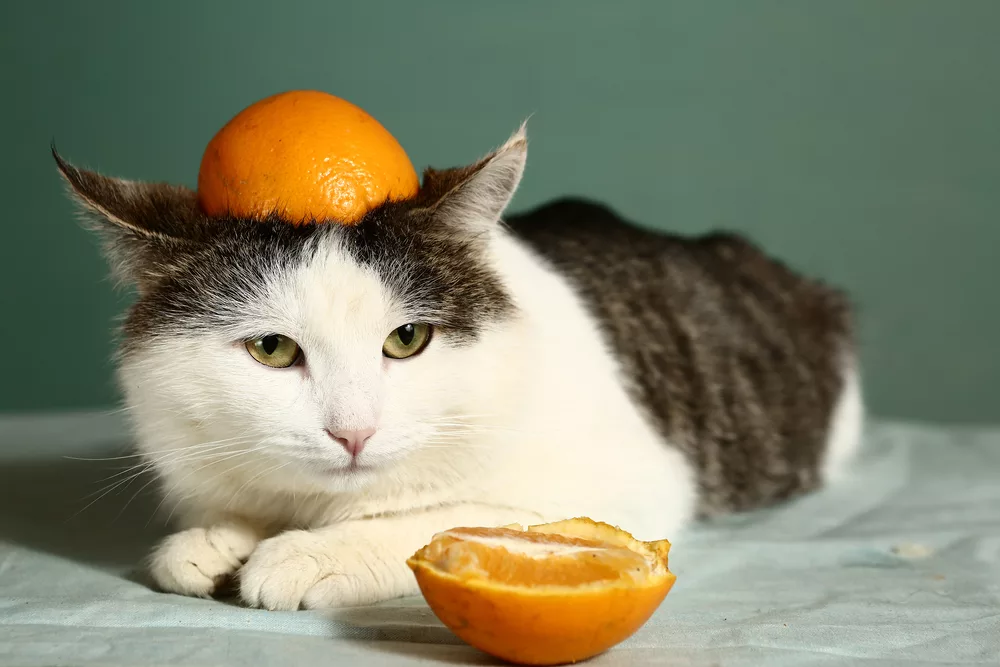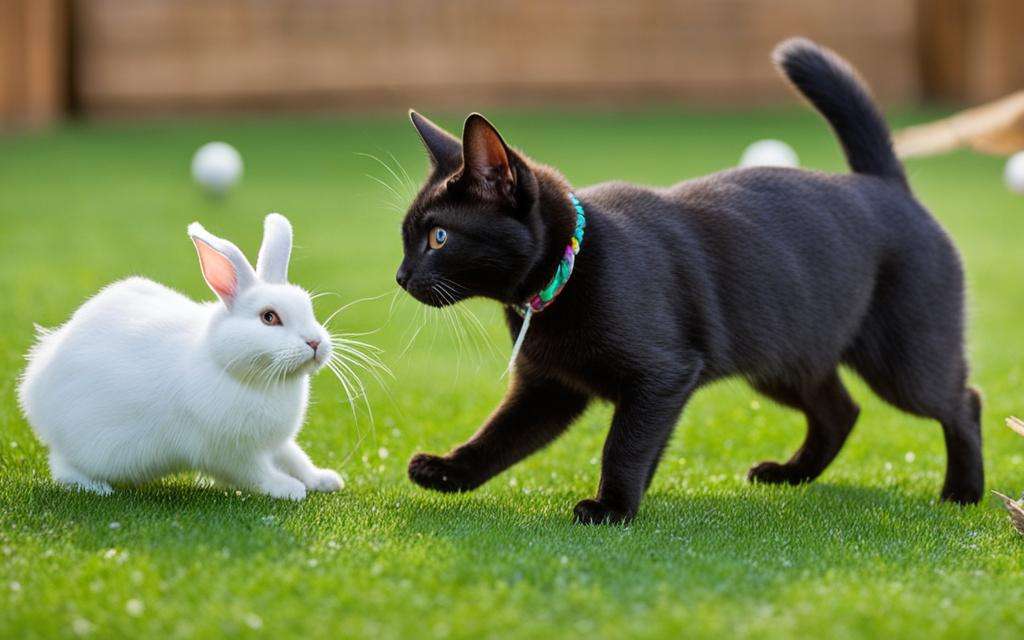Have you ever thought about what is in your cat’s mind?
Welcome to the enigmatic world of felines, where every purr and pounce holds a deeper meaning. I invite you to a fascinating journey into understanding our furry companions better. In this exploration, we’ll unveil the secrets behind those mysterious midnight escapades, decode the language of purrs, and much more. Each segment combines scientific insights with fun, promising an engaging and enlightening experience. Prepare to see your cat in a whole new light!
Why Does Your Cat Roam More Actively at Night?
Fact: Cats are naturally nocturnal creatures. Their ancestors were predators who hunted at night, a trait that modern domestic cats still carry. This nighttime activity is driven by their inbuilt circadian rhythm, making them more active and playful when heading to bed.
Fun: Have you ever wondered why your cat seems to have a midnight Zoomies session? It’s not just to keep you up! These nighttime escapades are like a cat’s version of a midnight snack run – except it’s more about play than food!
What Does a Cat’s Purr Really Mean? Is It Comfort or a Form of Communication?
Fact: A cat’s purr is a multifaceted tool. While it’s commonly associated with contentment, research suggests it’s also a form of communication. Purring can be a signal for help, a self-healing method, as it’s believed to promote bone and tissue repair.
Fun: Imagine if every time you were happy or needed a cuddle, you could purr! Cats use their purrs like Swiss Army knives of expressions – from “I’m happy” to “Help me, human!”
What is Your Cat Thinking? Interpreting your Cat’s Mind.
Fact: Cats communicate a lot through their eyes. A slow blink from a cat is a sign of trust and affection, often called a “cat kiss.” On the other hand, a fixed, unblinking stare could be a display of dominance or aggression.
Fun: Next time your cat gazes at you, it might give you a feline version of a love letter. Or it’s plotting world domination – it’s a fine line!
Why Do Cats Knead and Head-Butt? Understanding Cat Affection.
Fact: Kneading is a comforting behavior stemming from kittenhood. Cats head-butt, or bunt, to share their scent, mark their territory, and show affection. It’s their way of saying, “You’re part of my tribe.”
Fun: Ever got a head-butt from your cat? Congratulations, you’re officially in a cat gang now. It’s like getting a secret handshake from the fluffiest gang leader!
Can a Cat’s Tail Reveal Its Mood? Decoding Mood Swings in Felines.
Fact: A cat’s tail is a barometer of their emotions. A raised tail indicates happiness, while a tucked one shows fear. A flicking or lashing tail often means irritation – a clear sign to give them some space.
Fun: Want to know how your cat’s day is going? Just look at their tail! It’s like a mood ring at the end of their body, providing live updates on their emotional state.
Exploring the Hunter’s Instinct.
This behavior is rooted in their hunting instincts. In the wild, mother cats bring back prey to teach their kittens how to eat. Your cat bringing you a ‘gift’ might be its way of caring for you. Think of it as your cat’s version of DIY gifting. Who needs Amazon when you have a cat bringing you bespoke presents, even if they’re a bit… unconventional?
Unveiling the Truth About Their Social Independence.
While cats are often seen as solitary creatures, they can form complex social structures and bonds. They value their independence but also seek companionship and affection from humans and other animals. Cats are like that cool, independent friend who enjoys alone time but also loves hanging out. They’re the masters of ‘me-time,’ but they’ll never say no to a cozy lap cuddle session.
The Need for Vertical Spaces in a Cat’s World.
Cats seek high places for safety and to survey their surroundings. This instinct comes from their ancestors who climbed to avoid predators and hunt. High vantage points provide a sense of security and dominance. For cats, higher ground is like their personal throne. It’s their way of saying, “I’m the king/queen of this castle, and yes, I can see you stealing my treats from up here!”
Understanding the Importance of This Claw Sharpening Ritual
Scratching is vital for claw health, helping to remove dead layers and sharpen their claws. It’s also a way for cats to mark their territory as their paws release scent from special glands. Think of scratching as a cat’s way of interior decorating. Those shredded couch corners? That’s just your cat’s unique touch on the home décor!
How Crucial is Routine for a Cat’s Mind?
Cats thrive on routine. It provides them with a sense of security and helps reduce stress. Disruptions in routine can lead to anxiety and behavior issues in cats. Cats are the original creatures of habit. They’re like that friend who has their coffee at exactly 8:03 AM daily. Mess with their routine, and you’re in for some serious side-eye.
Conclusion
Cats are fascinating creatures, a blend of mystery, affection, and independence. As we delve into their world, we understand them better and strengthen our bond with these majestic creatures. Remember, each purr, each playful pounce, is part of a complex language that speaks volumes about their needs and emotions. So, the next time you find your cat doing something peculiar, take a moment to appreciate the depth of their behavior. After all, understanding is the first step to a harmonious coexistence with our beloved feline friends.








